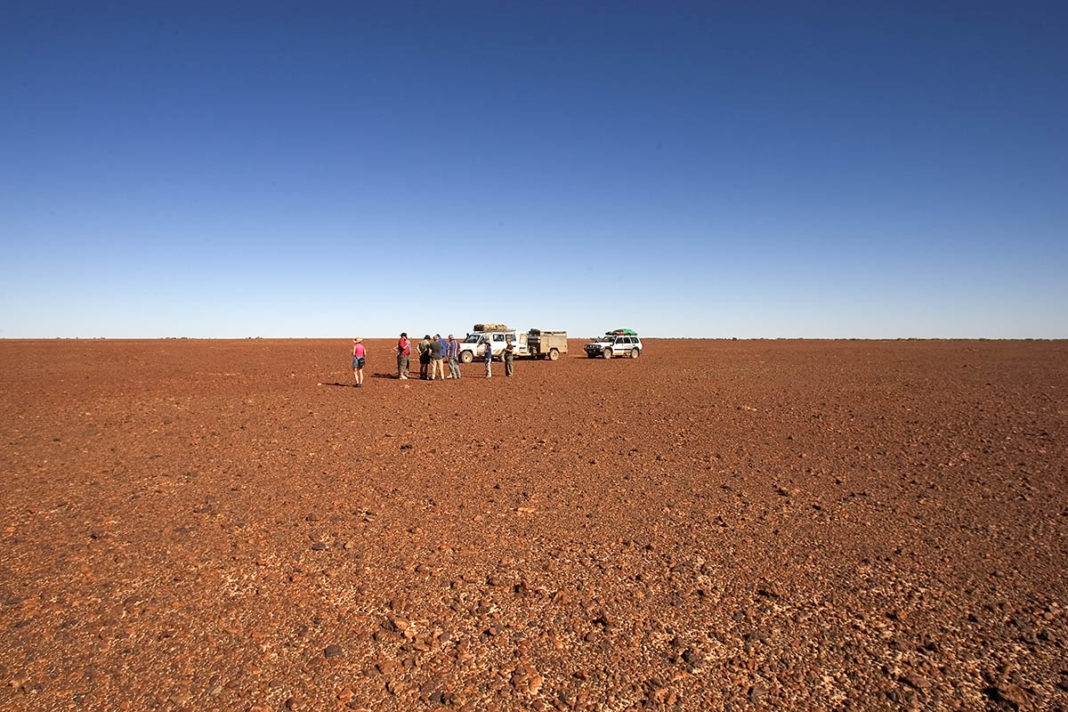The Sturt Stony Desert’s landscape is dominated by vast stretches of gibber plains. These plains are covered in a sea of closely packed, smooth, and rounded pebbles that range in size from gravel to cobbles. The pebbles can be a mix of colors, including browns, reds, and grays, and they often glisten in the harsh desert sun, creating a truly striking visual.
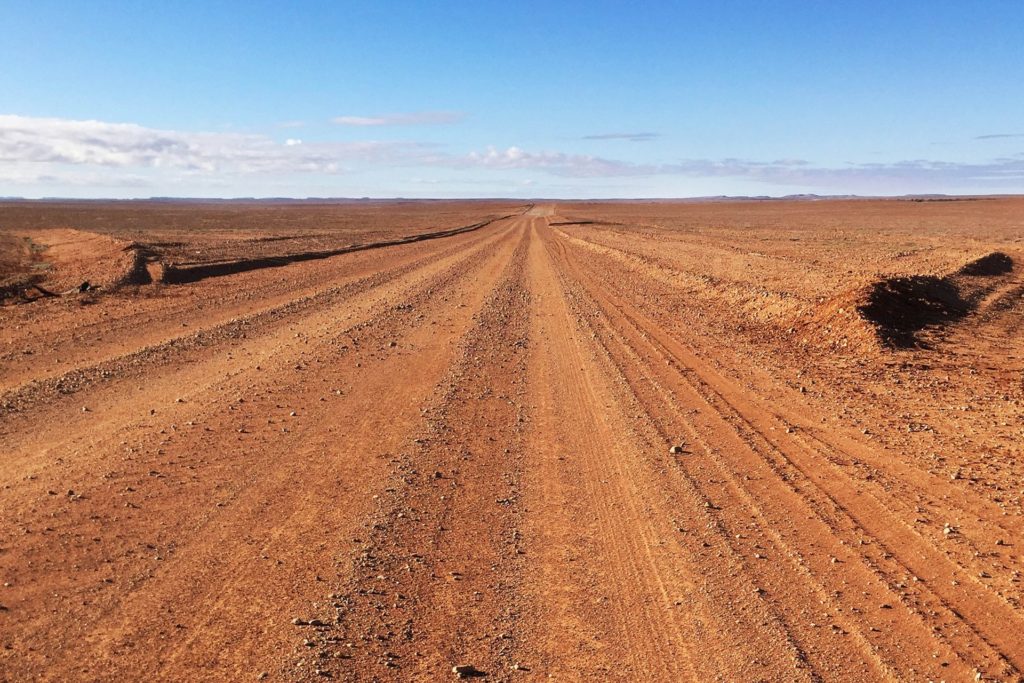
Interspersed amongst the gibber plains are also stony tablelands and jump-ups. Stony tablelands are areas of flat-topped mesas with steep sides, while jump-ups are formed by the erosion of softer rock layers, leaving behind more resistant rock that creates a series of cliffs or ridges. These features add some variation to the otherwise flat and seemingly endless plains.
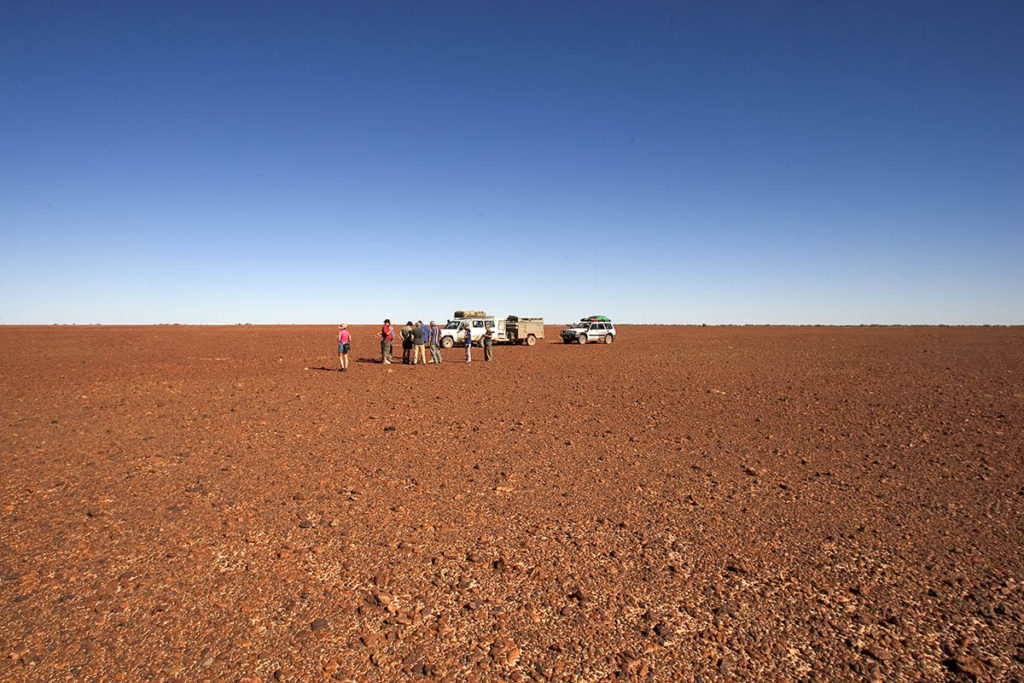
The horizon in the Sturt Stony Desert can be quite striking due to the relatively flat terrain and expansive views. With the landscape primarily consisting of vast plains, the horizon often stretches far into the distance, creating a sense of openness and vastness. The lack of significant vegetation or obstacles means that the horizon can appear uninterrupted, allowing for sweeping views of the surrounding desert terrain.
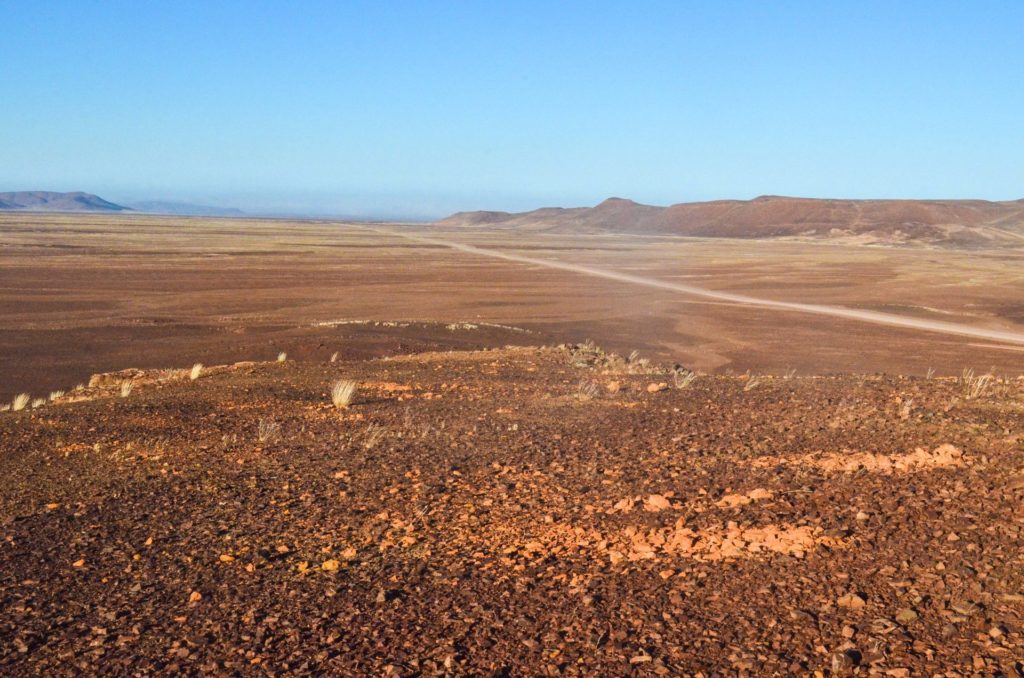
The terrain is relatively flat overall, but there can be some gentle undulations in the landscape. The region’s geology is diverse, with ancient rock formations dating back millions of years visible in some areas. Despite its arid nature, there are occasional dry creek beds, known as “creek lines,” which provide evidence of past water flow during periods of rainfall.
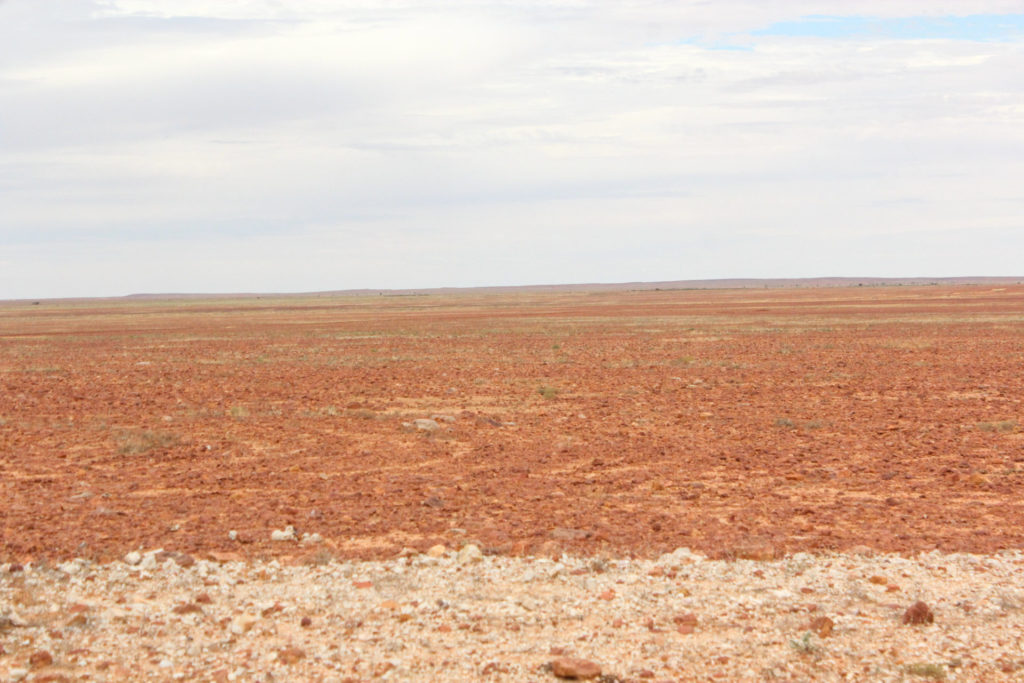
The Sturt Stony Desert receives very little rainfall, making it a harsh and unforgiving environment. However, this aridity also contributes to the stark beauty of the landscape, with its clear skies, dramatic sunrises and sunsets, and a sense of vastness that stretches as far as the eye can see.
According to the Internet





